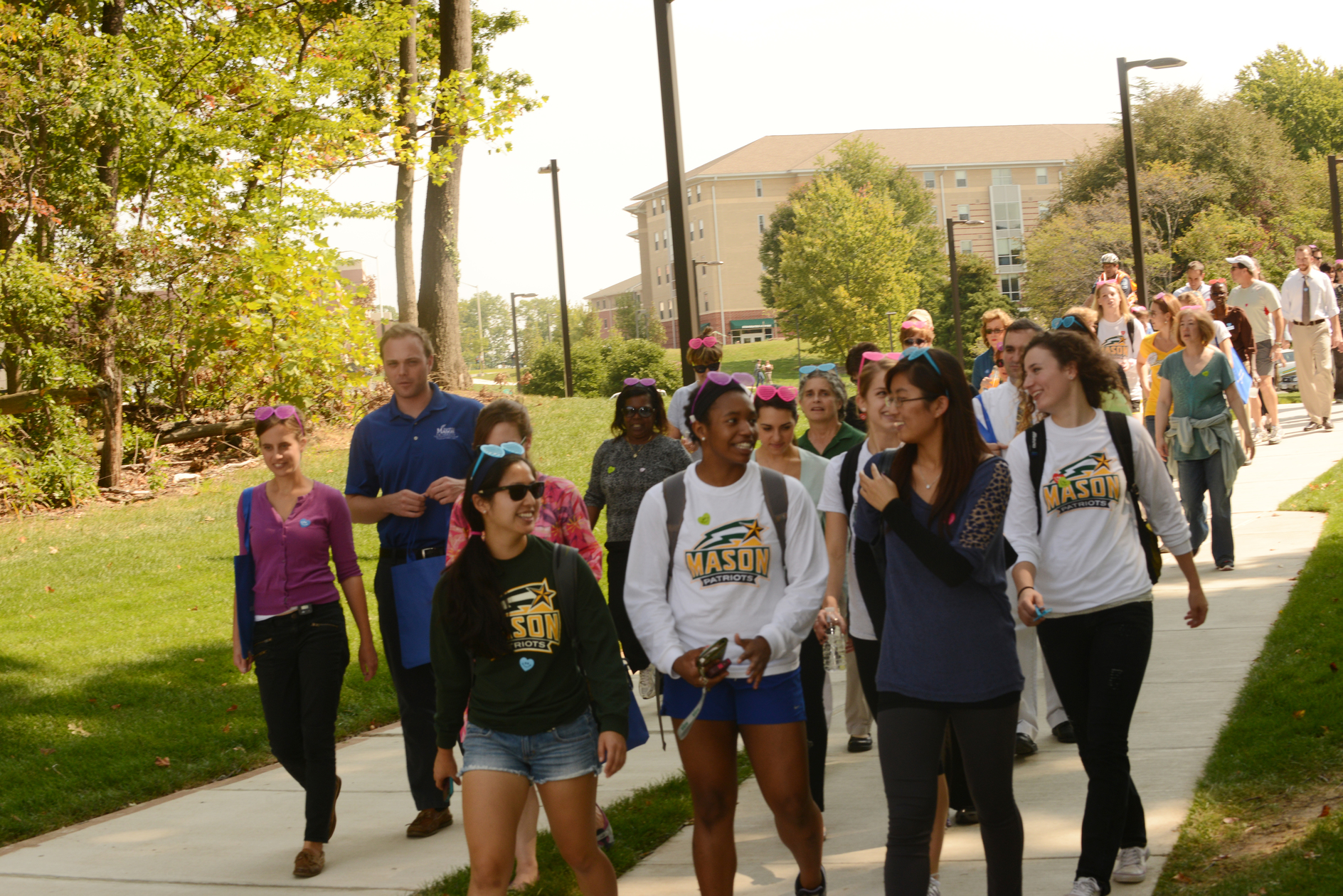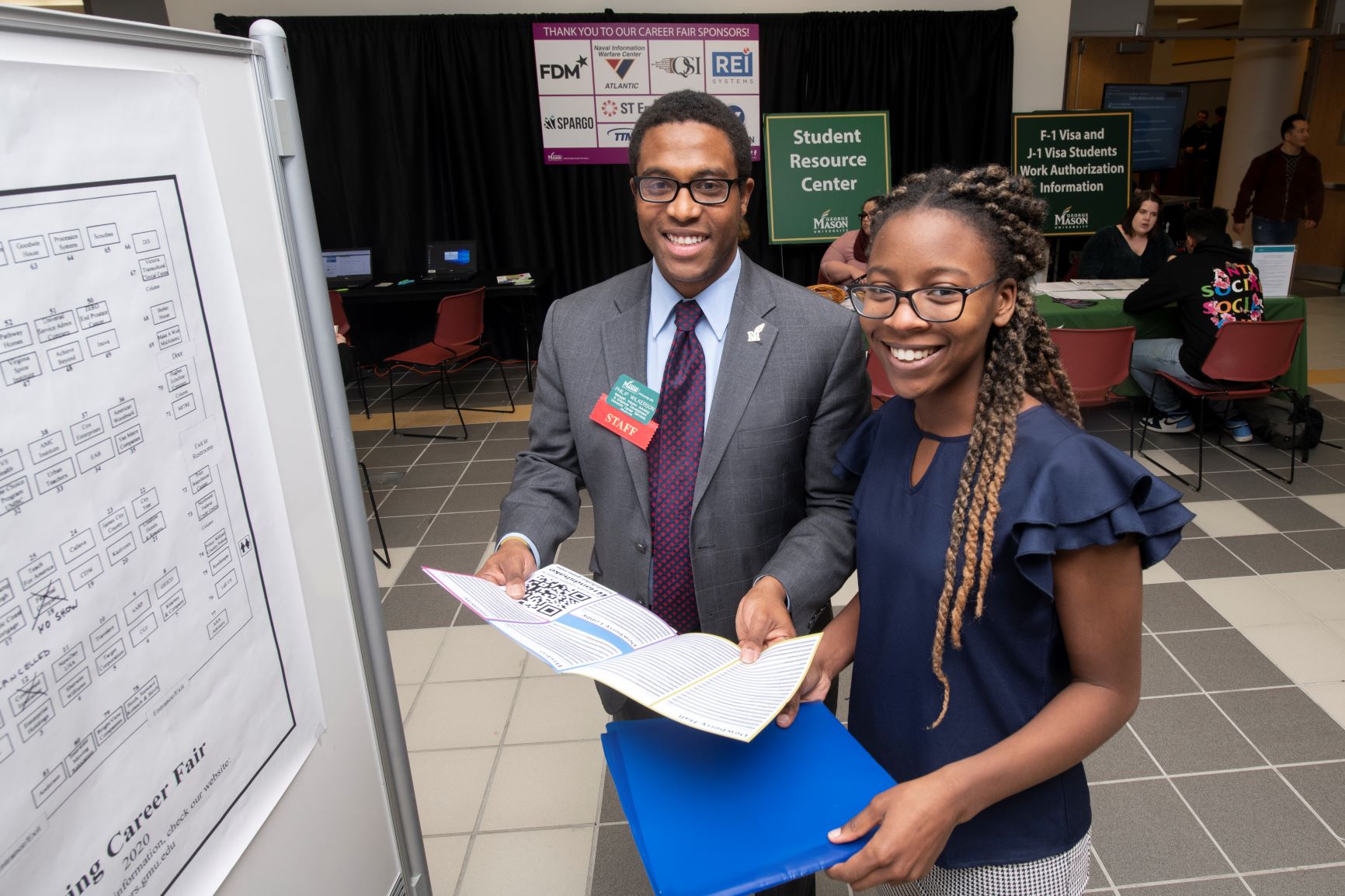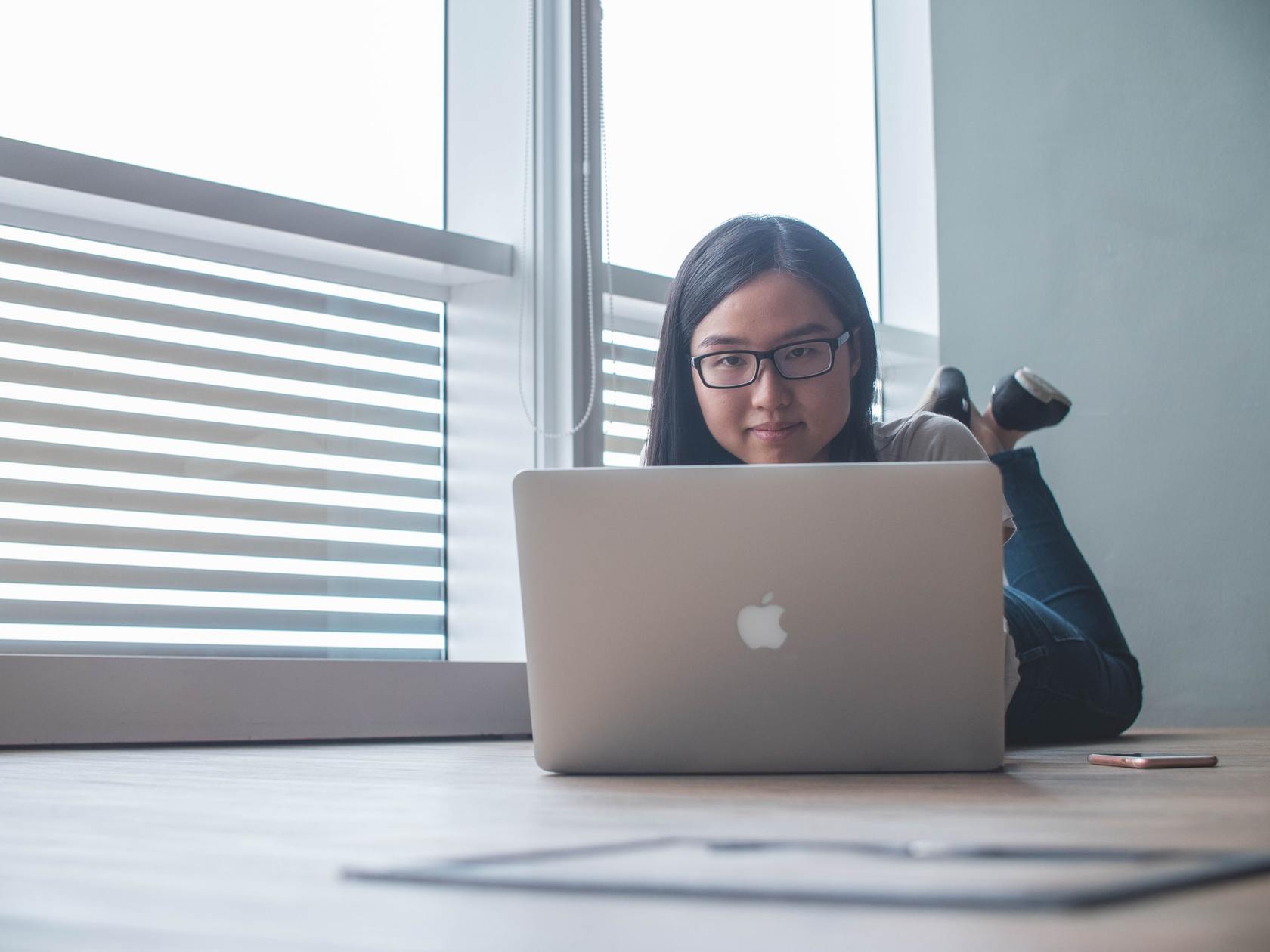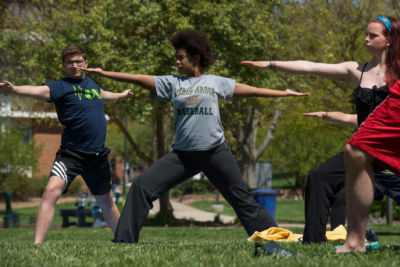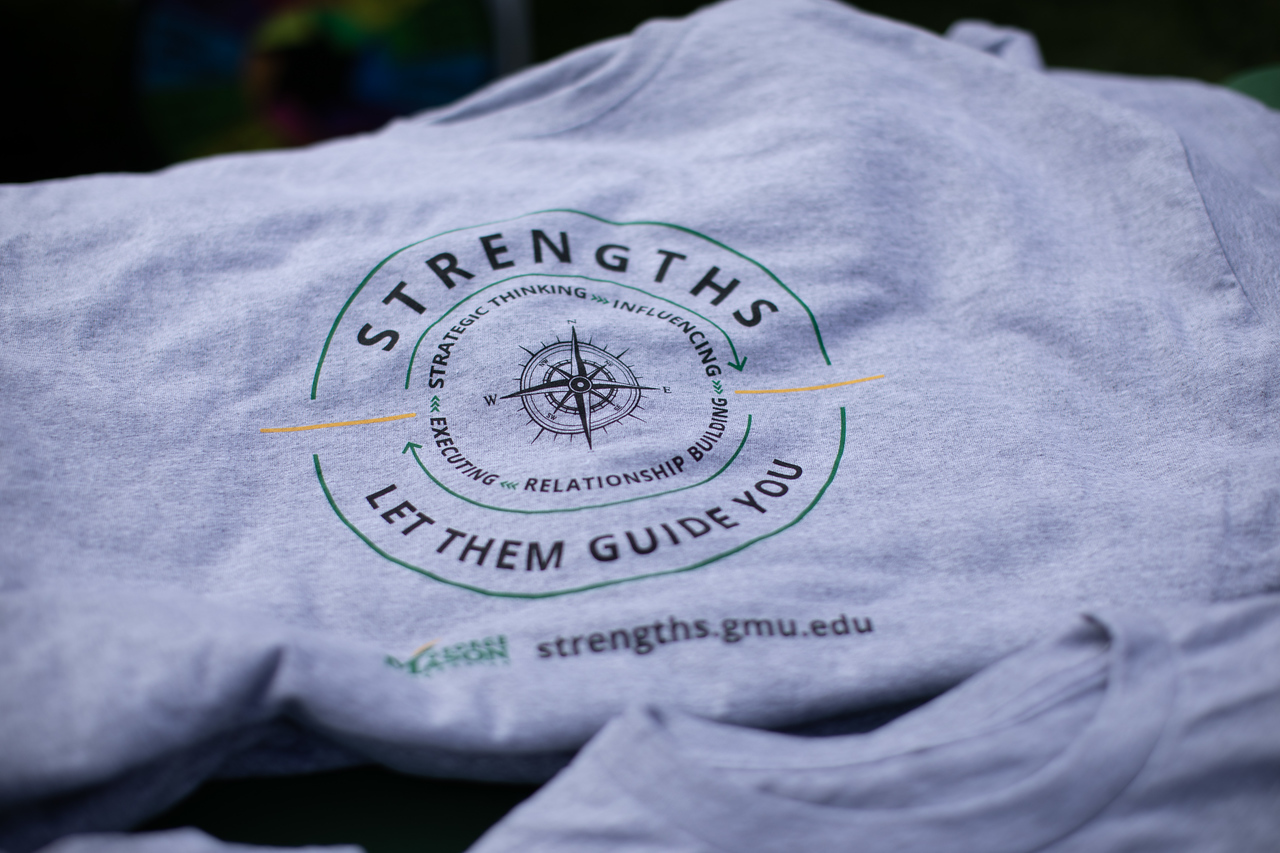By: Julia Morelli, Senior Fellow, Center for the Advancement of Well-Being, President, GMU Instructional Foundation, and Instructor, yoga, qigong, and stress management classes
“It is hard to stay flexible if you don’t stretch.” – Darren Shahlavi
Our bodies are built to move, and if we are sedentary, we can end up feeling stuck physically and mentally.
We don’t need to be glued to a computer in order to be productive at work. When we sit for hours at a time, tension creeps into our bodies, often without warning. In addition to reducing our physical well-being, being sedentary affects our mental and emotional states, increasing the likelihood of us feeling sad and hopeless.
Prolonged sitting is tied to obesity, heart disease, and diabetes. The brain needs good blood flow and glucose metabolism to function well. The good news is that taking small steps toward well-being makes a difference – especially if we do them regularly.
Surveys suggest that office workers often sit for at least 10 hours a day, and prolonged sitting is linked to university students suffering from discomfort and sleepiness. According to Harvard Medical School, long periods of sitting increases heart risks, even for those who exercise an hour a day. It increases stress, stiffness sets in, and makes snacking more likely.
Awareness is the first step toward well-being. Notice what happens to your mind and body when you sit for a long time.
The Mayo Clinic recommends taking a break from sitting every 30 minutes. Although the suggestions vary, it is a good idea to get up and stretch or take a walk at least once an hour. Notice where your body feels tight and move in ways that work well for you. This short videoshows movements that can help loosen the neck, shoulders, back, and hips.
Stretches to Try While Standing
- Shoulder circles: Draw your shoulder blades together, bring your shoulders up toward your ears, round them forward, and reverse direction ending with your chest and shoulders opening up. Repeat each direction several times. This practice can help counteract the technology slump (just notice your posture when looking at your computer or phone).
- Stretching up: As you inhale and stretch your arms away from your sides with your palms up and bring them overhead, then turn your palms over and slowly exhale as you lower your arms. Repeat several times.
- Gentle twist: Stand with your knees slightly bent, your feet wider than hip-width apart, and gently let your arms swing from side to side. Let your face and shoulders relax. You can make the movement small or big enough so that the back of your hands tap your lower back.
The key is to move regularly, even if you have a dedicated exercise practice.
Tips to Get Moving
- Get up: Use an App to remind you to get up and move, or set a timer across the room, so you have to get up. Walk or at least stretch.
- Take a long way: There is a tendency to take the shortest route or park close to a destination, even when going to work out. Choose to take a longer route instead.
- Walk and talk: Use the time you spend on your phone wisely and move around, whether you are inside or outside.
- Posture matters: Notice your posture when you are sitting and standing, pay special attention to shoulders, and let your heart and chest be open.
- Move during screen time: Be physically active when you are watching webinars or your favorite shows, or listening to podcasts.
Green exercise is a physical activity that takes place in the natural environment, and it is particularly beneficial, according to the National Institutes of Health. Take a walk outside, or notice the trees or clouds outside your window or look at pictures of nature as you stretch.
Do what works for you. Just move often to keep your mind and body healthy. Remember what Jason McCann of ChiefExecutive.net has said, “Pretty much all research into the subject comes to the same conclusion: Active employees are happier employees and, therefore, more productive.”
Additional Resources
Mason employees and students can access hundreds of on-demand well-being classes and programs through Mason BurnAlong.
The Mayo Clinic offers these suggestions to “Get Moving to Manage Stress”.
Harvard Medical School presents “Exercising to Relax”.
This article from The Guardian, “Forget Standing Desks: To Stay Healthy, You’ve Got to Move All Day”, can also motivate you to move.
Write one of these Thriving Together Series features! We’re looking for contributions on all topics related to well-being. Read other Thriving Together Series articles here and contact us at [email protected] for guidelines. Thank you for helping our Mason community thrive together online!

